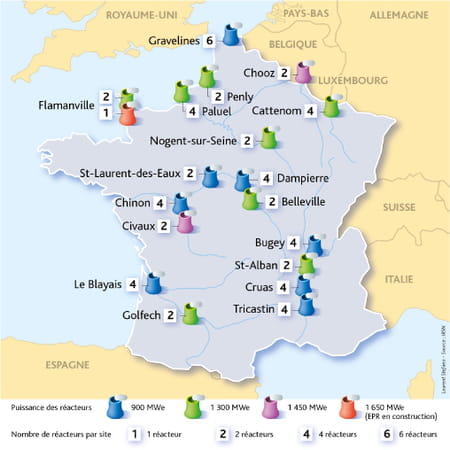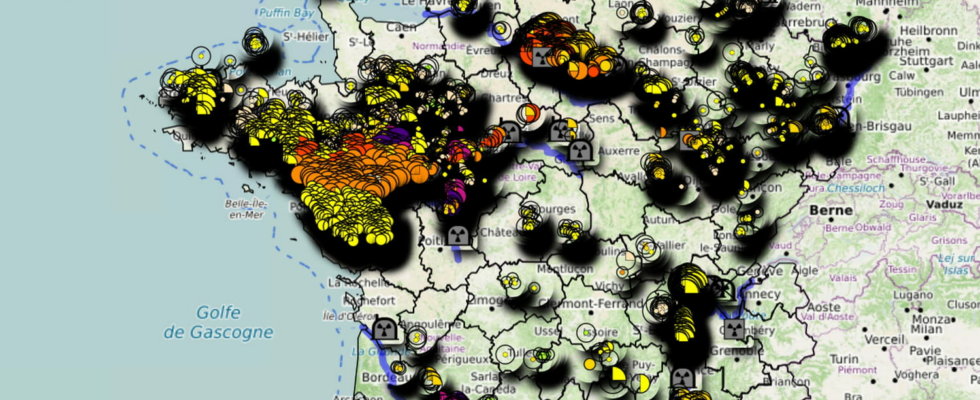An investigation reveals that radioactive waste is present in the tap water of many French cities.
You think you’re drinking water, but you might also be drinking radioactive waste. The tap water of around 10 million French people is contaminated by tritium releases, which come from nuclear power plants. This is what reveals a survey carried out by Mediapart with the Commission for Independent Research and Information on Radioactivity (Criirad). Around one in seven French people live in a municipality where tritium “has been detected in drinking water at least twice, and at a level at least five times higher than background noise”, which corresponds to 2 Bq /L (a unit of measurement of radioactivity), according to Mediapart.
But then which cities are most affected? These are mainly those “which are on the rivers along which nuclear power plants are located: the Seine, the Loire, the Vienne, the Garonne and the Rhône”, listed Julien Syren, co-director of Criirad interviewed by Médiapart. Currently, 18 nuclear reactors are active in France, spread throughout the country.

Tritium has thus been detected in many large French cities: Paris, Nantes, Angers, Tours, Orléans, Lyon… According to Criirad, “the quantity of municipalities (and the population) concerned is probably underestimated” , and this in particular because “certain municipalities are not controlled (or the results are not published)”. To find out if your municipality is affected, Criirad has developed an interactive map bringing together data on tritium measurements in France. You can consult this map directly and free of charge online on the Criirad website.
Even if tritium discharges are regulated, the presence of this radioactive product is monitored in drinking water. Above 100 Bq/L, an investigation is carried out. But between 2 Bq/L and 100 Bq/L, nothing happens. Several analyzes have detected concentrations in this range, notably in Vienne (65 Bq/L in 2017) or even in Angers (56 Bq/L in 2019). Let’s be reassured, these results are far from the drinking threshold, established at 10,000 Bq/l by the World Health Organization.
This presence of tritium in our drinking water is, however, not harmless for the health, particularly that of vulnerable people, such as pregnant women and children. Few scientific studies have determined this impact of tritium on health. A American study journal published in 2023 concluded that “the toxicity of tritium is equal to or greater than that of many other nucleotides of concern.
The vast majority of studies indicate that exposure can have biological consequences, damaging DNA, causing physiological and developmental damage, reducing fertility and longevity, and increasing the risk of diseases, including cancers”. While alerts on the quality of tap water but also bottled water have been regularly issued for several years, it is becoming difficult to know which water to drink safely…
